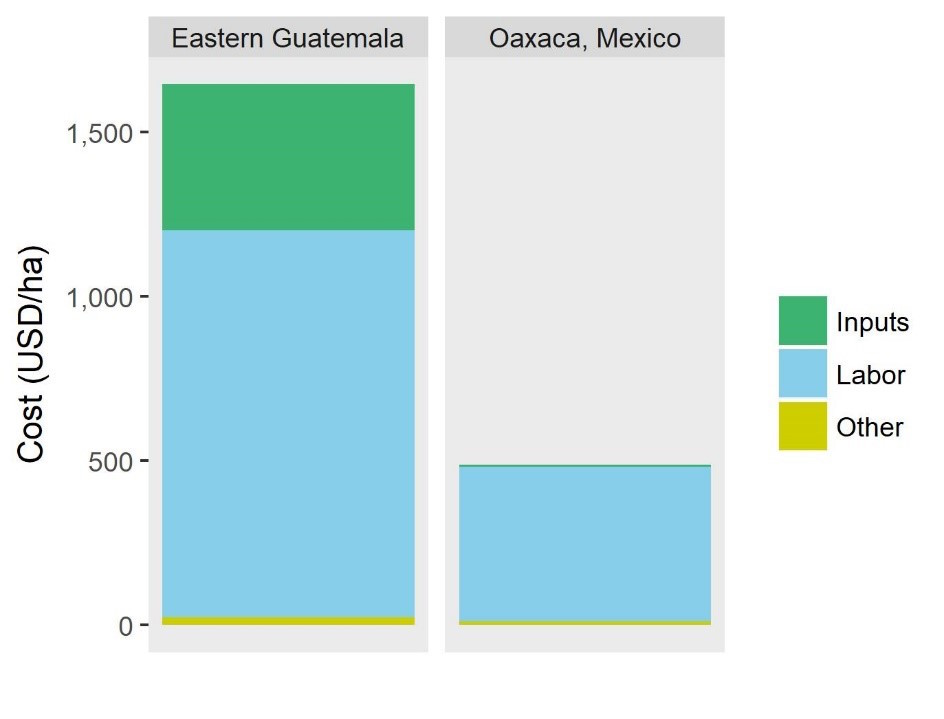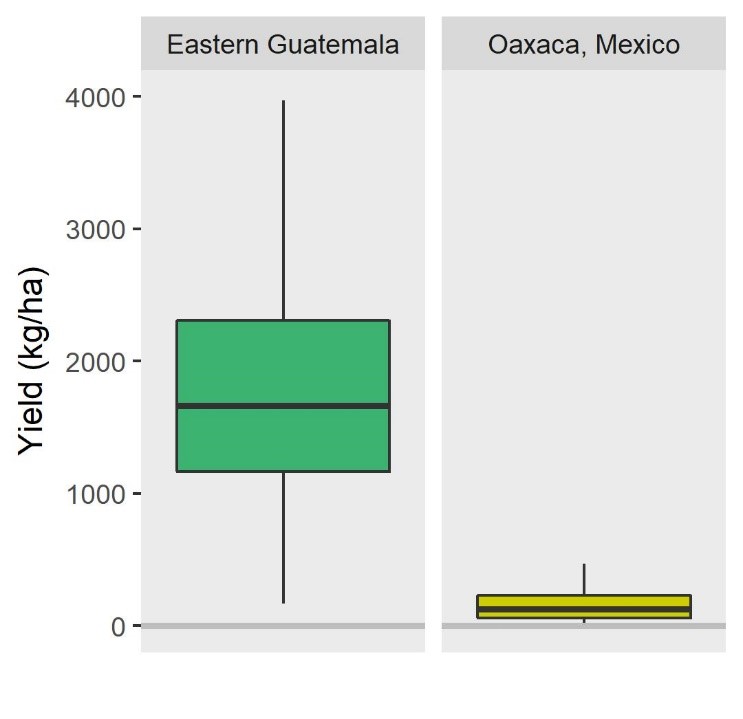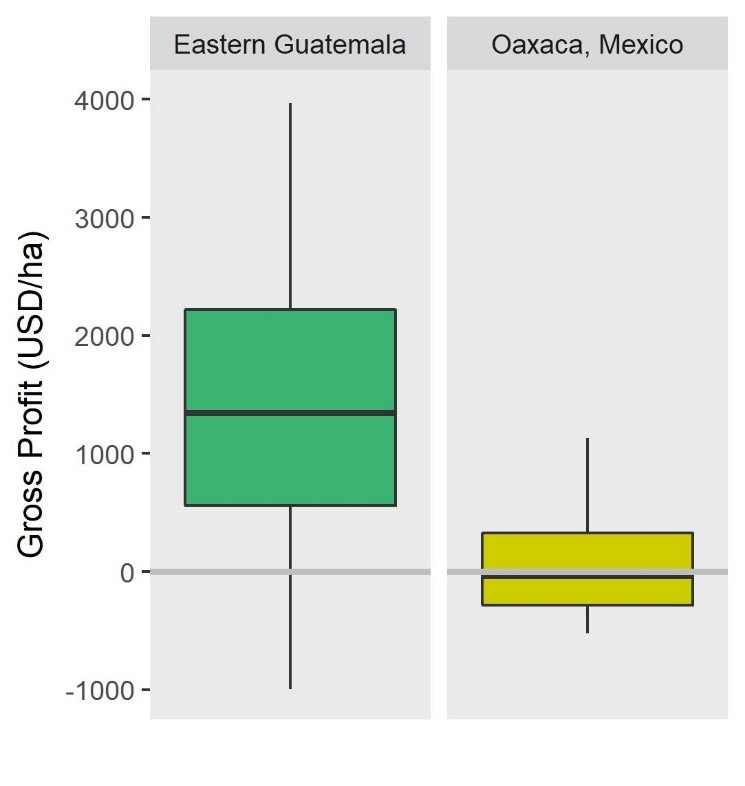Although the Mesoamerican coffeelands (Central America and Southern Mexico) are a relatively compact geographical region, they contain a diversity of coffee production systems — agroecologically and organizationally.
Among programs in other countries, CRS has ongoing programming with community groups in Oaxaca (one of whom, SICOBI, will be highlighted in a subsequent post), farmer groups in San Marcos, and groups in Zacapa and Chiquimula in Eastern Guatemala. These three regions have diverse coffee systems but face many of the same challenges to achieve profitability. Let’s dig into our data from the field and take a closer look at two of these systems.
Oaxaca’s farmers are tightly organized in communal land management organizations, whereas the farmers in Eastern Guatemala are generally unorganized or loosely linked to a coffee cooperative. Oaxaca’s production systems are forestry/agroforestry systems with a high degree of biodiversity at over 15 tree species per hectare, organic production, and are low input and low yielding. Until recently, many of the farms had not been renovated in more than 80 years.
By contrast, Zacapa and Chiquimula’s coffee systems are not particularly diversified beyond a few shade trees. They invest heavily in inputs, have higher costs and significantly higher yields. Many of these farms were renovated over the past five or six years.
Now that we have laid out some of the basic characteristics of the two coffeelands in question, let’s compare them in terms of costs of production, yields, and profitability (gross profit):
Figure 1 highlights the different approach to coffee management and maintenance employed by both sets of farmers. The costs of production are more than three times higher per hectare in Zacapa and Chiquimula than in Oaxaca. Upwards of 90 percent of the cost of production in Oaxaca is labor during harvest season. So how do these different management approaches impact yield?
The data presented in Figure 2 is an average of biannual yield data from a sampling of 100-plus farmers in both regions — 156 farmers in Eastern Guatemala and 135 farmers in Oaxaca. At a glance we can see that the Eastern Guatemalan coffee farmers have significantly higher yields per hectare (parchment) than their Oaxacan counterparts. That said, Oaxaca’s organic, biodiverse systems have uniformly low yields — between about two to four 60-kilo export bags of coffee per hectare — while Eastern Guatemala’s yield numbers are highly variable, ranging from below 10 bags to upwards of 60 bags, despite relatively uniform costs of production.
Let’s go beyond yields and look at gross profit data from both systems:
The Eastern Guatemalan farmers have also been able to improve their systems during the past few years by improving their soil management and applying targeted practices that have resulted in some big jumps in yields and lowered costs. Nonetheless, this group of unorganized farmers have not been able to make the market linkages necessary to break free from the C-price — thus, despite their yield gains and improved efficiency, they are the farmers headed north.
Dan McQuillan
Dan McQuillan is the Technical Director of CRS-Isidro, a new CRS blended finance initiative that provides a package of technical assistance and investment capital to impactful agricultural enterprises. From 2012-19, he managed Catholic Relief Services' Agriculture Livelihoods portfolio for Guatemala and Mexico.
Comment
1 Comment
Comments are closed.










I have found this article very informative.
I am a Ugandan, 53 years old, and a PhD candidate in Agro- Ecology and Livelihood systems at Uganda Martyrs’ University, researching on the theme: of how to bolster erratic climate change rigours of today through the use of ICT to improve coffee productivity among small scale holder farmers in Uganda and therefore sub Saharan Africa in general.
May you as well help me find potential funders in this regard.
Thank you